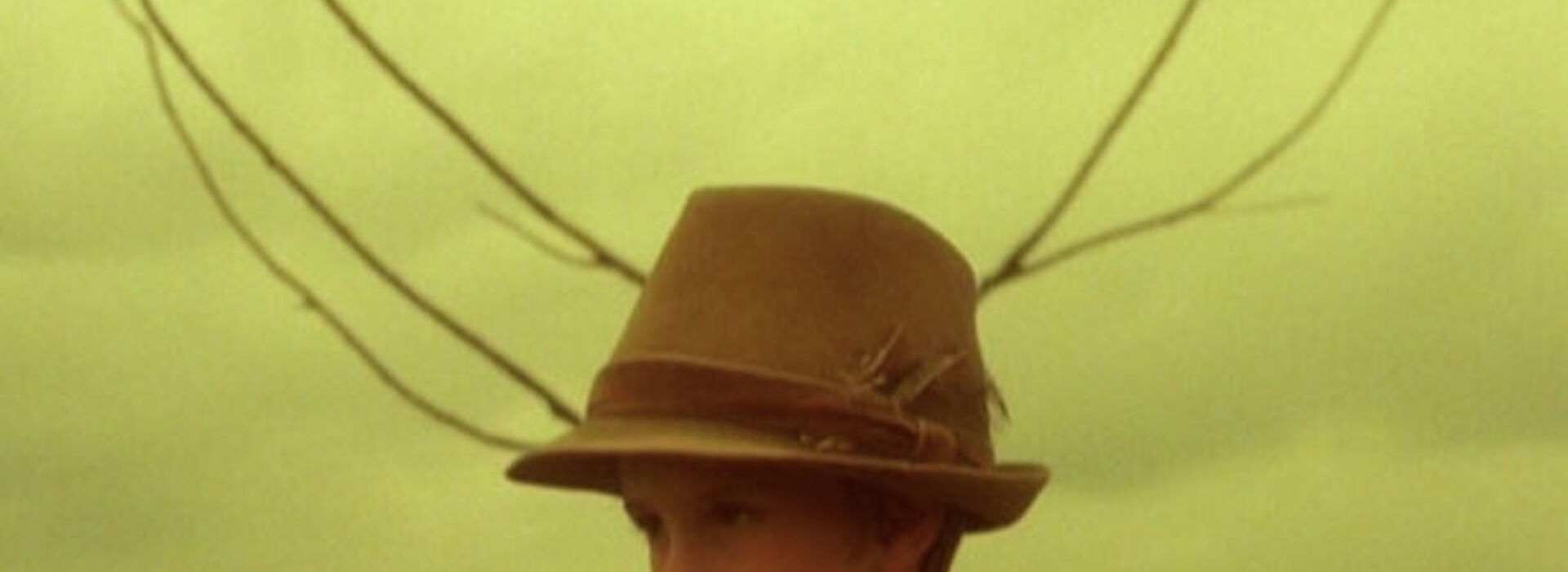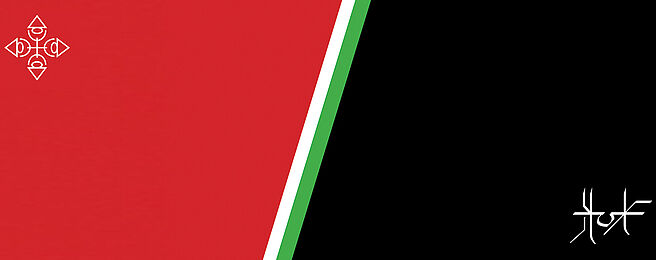LEANING ON THE PAST, WORKING FOR THE FUTURE
The opening of the exhibition Leaning on the Past, Working for the Future at the Kunsthalle Exnergasse was planned for June 4, 2020, and thus the 100th anniversary of the Treaty of Trianon, the peace treaty between the Allied forces in the First World War and Hungary. The online program starts with four artists’ films and an essay that explore possible “Hungarofuturisms”. The artistic positions stand for critical aesthetic practices of contemporary politics that not only point to the historicity of identity narratives but also seek to unlock the subversive potential of the imagination of the future.
Chapter I. Trauma & Trianon
“You are not a Hungarian if you do not grieve for Trianon; if there were no Trianon, there would be no Hungarians either,” [1] thus the poet Márió Z. Nemes summarizes the traumatic self-definition of nations that are obliged to the constant reproduction of their national trauma. The signing of the Treaty of Trianon on June 4, 2020, resulted in the country’s borders being radically redrawn, shrinking the country to a third of its original size, tearing families apart and forcing many to leave their homes. In this context, Hungarian identity is constructed by a rupture, a split and the subsequent trauma, a psycho-political construction which is at the mercy of the paranoid conditioning of illiberal power techniques. The importance of this symbolic date in times of general social distancing and the affiliations that are emphasized below are currently the subject of intense debate.
[1] Nemes, Márió Z., “Trianonná-válás”, in: litera.hu, 2020.
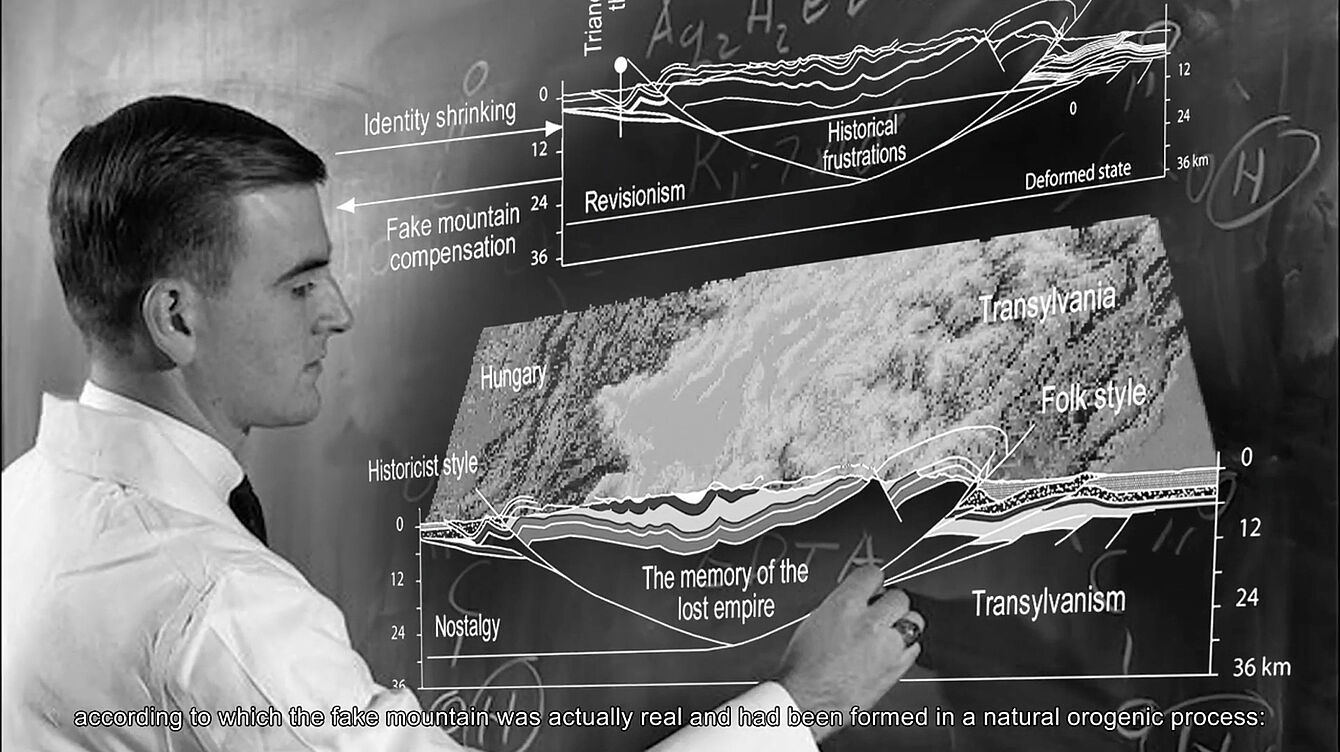
And thus the story of a country called Hungary in the film Amorous Geography began exactly 100 years ago and leads into the fairytale world of national myths and geographies. Szabolcs KissPál is one of those contemporary artists whose aesthetic engagement coincides with political activism for democracy and the plurality of expression. In the short film presented here, he humorously succeeds in revealing the functions of political communities or, in Benedict Andersen’s terms, “imagined communities,” [2] and exposes the hybrid structures of national myth creation. The work is part of a long-standing documentary fiction project series by KissPál entitled From Fake Mountains to Faith (Hungarian Trilogy). For the 100th anniversary of the Treaty of Trianon, the entire project archive has been transferred to an online platform which can be seen here from June 4, 2020. The archive is based on documents, stories but also consciously arranged visions, or in KissPál’s terms, “counterfictions”.
Chapter II. Tradition & Feminisms
A central topic of populist agenda is the instrumentalization of the urban/rural dichotomy in order occasionally to generate antagonisms and new bogeymen based on them. The cultural war that has been taken up by the conservative Hungarian Art Academy (MMA) often juxtaposes urban, and therefore liberal and critical art forms, with so-called “traditional” or folkloristic modes of expression. The works by Dominika Trapp aim to question this inherently simplified confrontation by attempting to create dialogues for communities that have been separated from each other for political, historical or geocultural reasons.
[2] Andersen, Benedict, Imagined Communities: Reflections on the Origin and Spread of Nationalism, Verso Books, London, 2016.
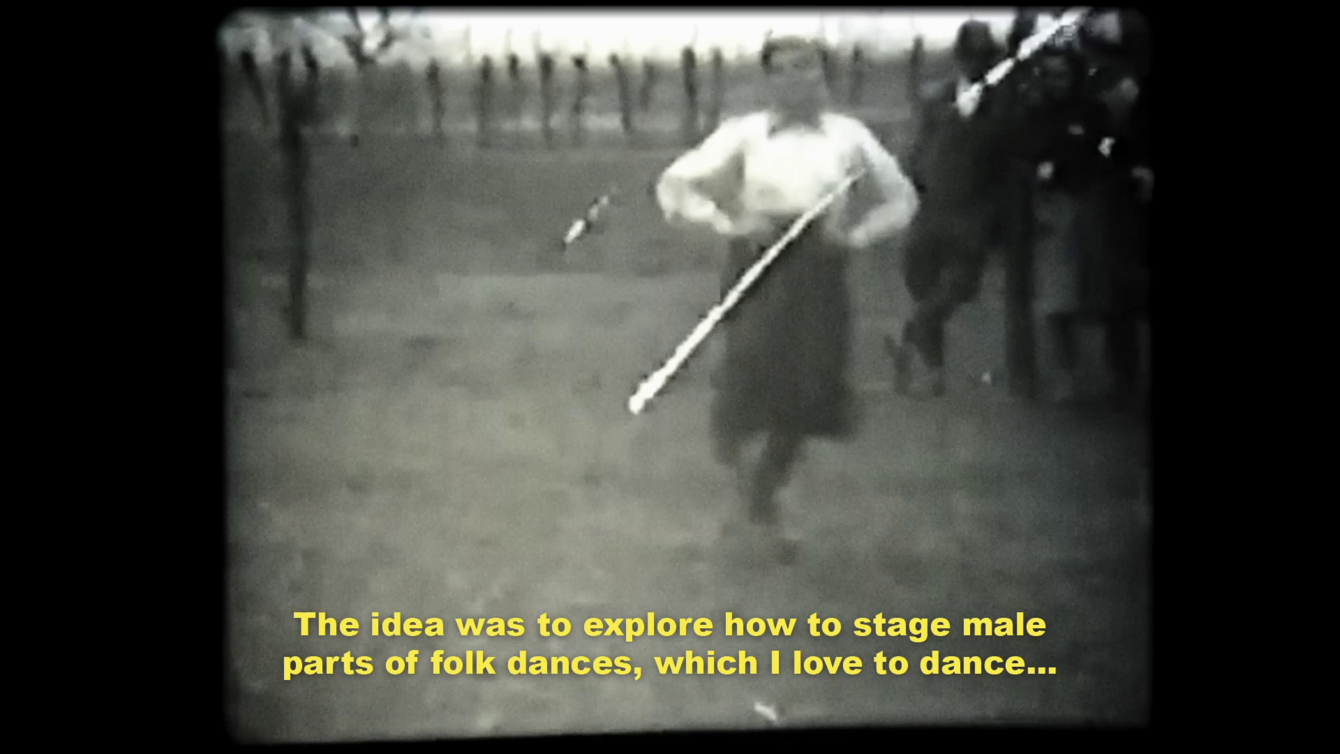
Leányos / Girl’s Solo Folk Dance, made in collaboration with the dance student Kata Szivós, looks at preserved gender roles within folkloristic art forms. [3] By breaking with the apparent division between male and female dance motifs and scorning normative behavioral patterns, the dancer opens up a contemporary way of reflecting on tradition and authenticity, but also on the body and virtuosity. For Trapp the artistic engagement and dialogue with the dance student makes it possible to connect progressive futurities with traditional cultural expression and to break open hegemonic discourses around the body through feminist strategies. The video includes archival footage of Hungarian dancers who performed the famous Hungarian male dance (Legényes) in the past. She thereby places Szivós – who several decades later created her very own solo dance by freely combining elements of male as well as female moves – in the tradition of progressive forms of folkloristic expression. At the same time, the video pays tribute to the volatile nature of emancipatory aspirations that are quickly haunted by oblivion or past dogmas.
Chapter III. Fiction & Realness
The land, the “puszta” of Hungary, can be regarded as the epicenter for broad, speculative horizons, where legends are promoted to pseudoscientific facts. The word “puszta” also means “emptiness”, pointing towards the non-essentialist dimension of the collective imagination in the national unconscious. These social-cultural “spaces” thus appear to be freely programmed and occupied by ideological stances. The artistic praxis aims at the critical “emptying out”, reconstruction and reprogramming of these psychogeographies.
[3] The work premiered as part of the exhibition Dominika Trapp: “Don’t Lay Him on Me…”, at Trafó Galéria Budapest, January 17 – March 8, 2020. Exhibition documentation: https://balkon.art/home/online-2020/trapp-dominika-ne-tegyetek-ream/?fbclid=IwAR2FDrOUOBnc63zEK000ytEwzStmf0UU9JjfSrEefzBc0byuIHndYRngdqs
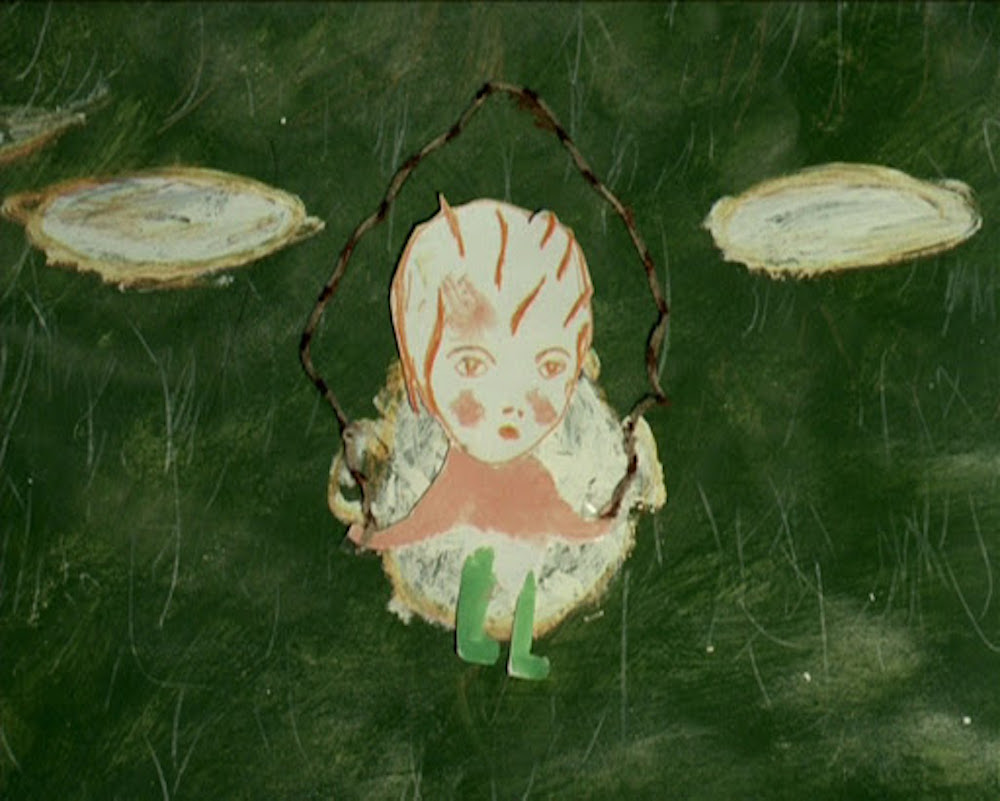
In their low-budget works, which can be located between installation, painting and film, Igor & Ivan Buharov often revisit tropes of a rural surrealism and create délibáb-like visions governed by poetic folly. The dreamline journey with Johnny and his goosies, a collaboration with Vasile Croat, employs a hotch-potch of folkloristic, socio-political and cosmological references that on the one hand enable the creation of myths, while they facilite at the same time individual escape from the bonds of reality. Igor & Ivan Buharov’s oeuvre fractures the time-space-continuum within their narration, but also in a material sense by combining stop-motion, montage and a range of cinematic techniques.
Chapter IV. Past & Future
The linking of the real and the speculatively virtual, the artistic and the rituals of the past with visions of the future is an important feature of ethnofuturist strategies. The term was coined by communities of the Finno-Ugric language family as a Dadaist aesthetic practice, which in the 90s became a forum that enabled the peripheral yet still culturally autonomous existence under Soviet and later Russian dominance.[4] In his article “Ethno-Futurism: Leaning on the Past, Working for the Future”, the art historian Anders Kreuber wrote about his acquaintance with representatives of the group.[5] The movement is still active today, but it has adopted increasingly marked ethnic-nationalist features; evidence of the dangerous proximity between aspirations to preserve traditional forms of expression in a pluralistic sense and xenophobic ideas of nationalist superiority. Against the political exploitation of national mythology, Hungarian artists are seeking alternative aesthetic strategies.
[4] Avanessian, Armen und Moalemi, Mahan, Ethnofuturismen, Merve Verlag, Berlin, 2018.
[5] Kreuger, Anders, “Ethno-Futurism: Leaning on the Past, Working for the Future”, Afterall: A Journal of Art, Context and Enquiry, 43, 2017, 116̶133.
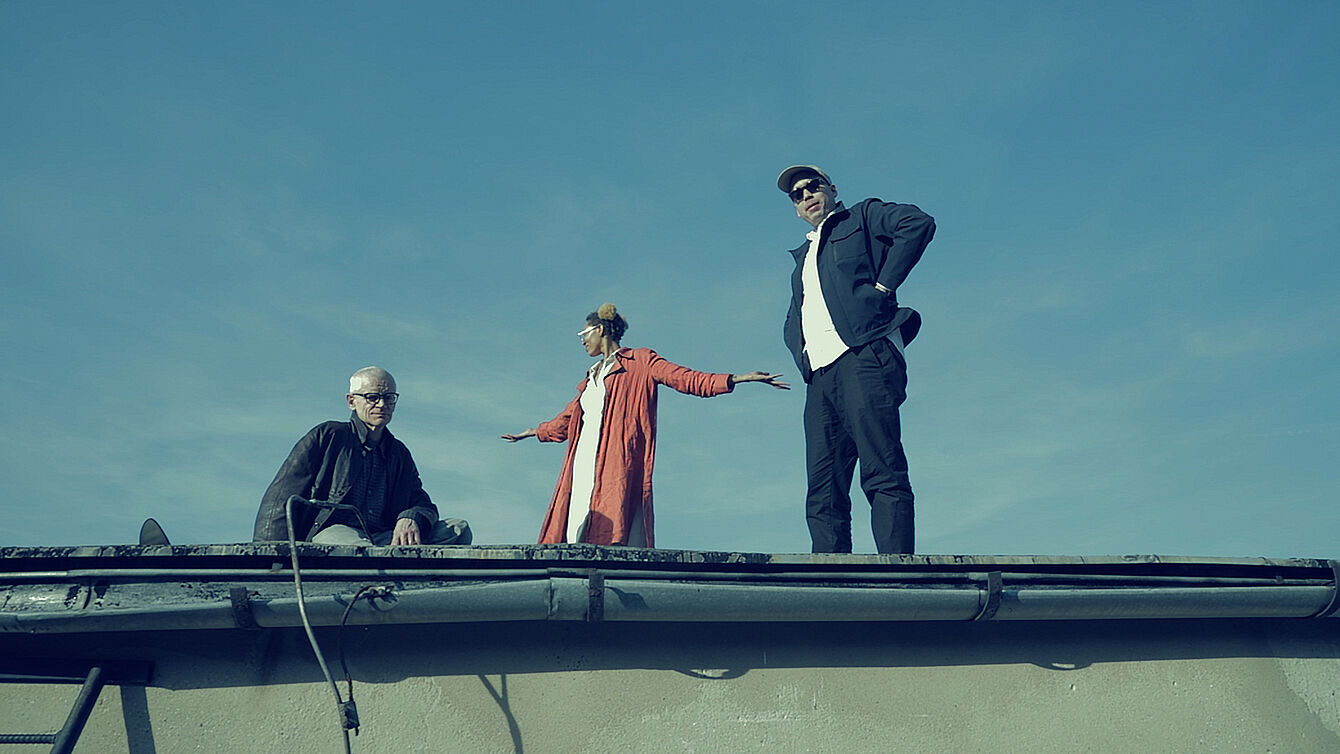
In the video Mothership (2019) by János Brückner, an African-American artist from the Pacific Northwest embarks on a field trip to understand the Hungarofuturist movement with the help of several local interpreters of this mytho-fiction. The video speculates around Hungarofuturist aspirations, showing a possible future of reclaiming cultural traditions. These tactics appropriate esoteric-nationalistic motifs in order to create an absurd – though from a critical political point of view genuine – vision of (re)formulating the contemporary Hungarian identity. Like aliens, and hence paradoxically foreigners in their own land, the protagonists of the film move across three space stations and express their program in accordance with the Hungarofuturist manifesto: We Demand a Hungarian Cosmos instead of a Conservative Sky![6]The materialist, urban environment of Budapest and its surroundings is crucial to presenting countercultural heterotopies waiting to be (re) conquered.
Nationalist, populist and illiberal discourses appropriate, incorporate and medialize historic symbols, myths and geocultural narratives. They create a virtual ideological machinery, a “nation machine” in the Deleuzeian sense: it controls and programs the collective social unconscious. By replacing, overidentification, appropriation and hybridization, the artistic praxes presented aim to redirect this “nation machine.”[7] Friedrich Nietzsche’s renowned phrase “to philosophize with the hammer”[8] can here serve as an aesthetic argument, moreover as a tool that becomes the essential link between the exhibited works. The hammer not only represents the form of disruption but also a tool of creation and impact. The artists consciously devote their work to this dangerous proximity to the fine line between demolition and creation, in order to undermine the principles of ideology.
[6] Miklósvölgyi, Zsolt and Nemes, Márió Z., Hungarofuturist Manifesto, Technologie und das Unheimliche, 2017, http://www.technologieunddasunheimliche.com/hungarofuturism.html
[7] Borbély, András, “tisztátalan / tisztátalan / tisztátalan nemzetGép”, in aszem.info, 2017, https://aszem.info/2017/05/tisztatalan-tisztatalan-tisztatalan-nemzetgep1/
[8] Nietzsche, Friedrich, Twilight of Idols or How to Philosophize with the Hammer, trans. Duncan Large, Oxford UP, Oxford, New York, 1998.

